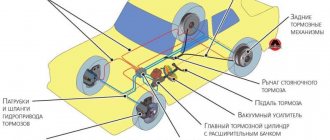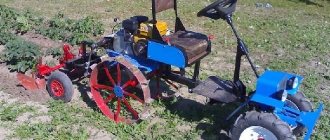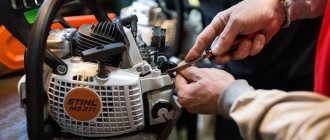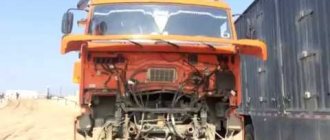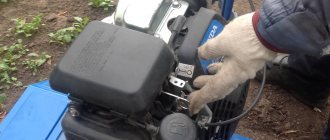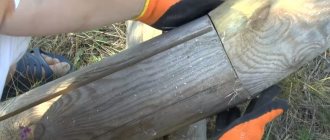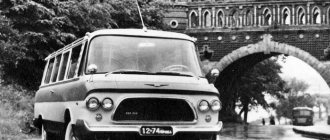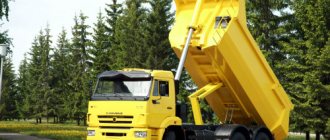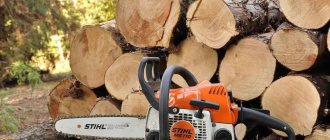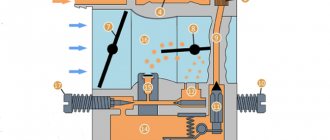Recommendations
- Clark, Gregory (2007). Farewell to alms: a brief economic history of the world. Princeton University Press. item 286. ISBN 978-0-691-12135-2.
- "US Patent: 0000542." Retrieved July 18, 2013.
- "When threshers were the kings of the harvest." Small business development.
- H. J. Finnis (1967). "Ridley, John (1806 - 1887)." Australian Dictionary of Biography, Volume 2
. MUP. item 379. Received 2007-08-19. - https://www.bardis.ie/composers.htm#duggan
- Songs Text: Old Thresher
Early social influences
Thresher since 1881.
The Swing riots in Britain were partly a result of the thresher. After years of war, high taxes and low wages, farm workers finally rebelled in 1830. These agricultural workers faced unemployment for a number of years due to the widespread introduction of threshing machines and the containment field policy. Thousands of men are no longer needed to care for crops; just a few will suffice. With fewer jobs, lower wages and no prospect of improvement for these workers, the thresher was the last straw, the machine was to bring them to the brink of starvation. Seesaw rioters smashed threshing machines and threatened farmers who owned them.
The riots were dealt with very harshly. Nine rioters were hanged, and another 450 were transported to Australia.
Flywheels
All of this can probably be summed up in one word: infrastructure.
The ability to produce hardware lies in infrastructure, such as railroads and newspapers (and today, trucking and the Internet). The infrastructure reduces the amount of energy required to activate any development. Sometimes the developments themselves improve the infrastructure, creating a self-sustaining cycle that generates exponential growth. Is this enough to describe the rate of progress in our history? Do we need to introduce cultural reasons - a common factor of ingenuity - Joel Mokyr's "idea of progress" versus Deirdre McCloskey's "ancestor worship" and "bourgeois honor and prestige"? It seems clear that it matters whether people thought progress was possible and necessary. If this is not so, it seems an amazing coincidence that the Industrial Revolution began shortly after the work of Bacon and the beginning of the Scientific Revolution, and in the same part of the world. However, now that I have a better understanding of the problems of the 18th century threshing machine inventors, I am inclined to favor infrastructure as the main reason for the delay.
Or, more broadly speaking, I imagine there to be a set of overlapping flywheels, each creating its own virtuous cycle. Improving infrastructure speeds up progress, which in turn creates more and better infrastructure. Belief in progress generates real progress that reinforces the belief. Increasing income allows you to invest in progress, which generates even more income. Science leads to progress that helps advance science. And since all these wheels intersect on progress, they all reinforce each other indirectly, and perhaps directly.
Why did it take so long?
The issue of the spread of the threshing machine is included in a more general question that interests me: why did we wait so long for the Industrial Revolution?
Some inventions depended on theoretical concepts discovered only during the Scientific Revolution—the electric generator or the steam engine. Others were independent: a threshing machine, a cotton gin, a spinning jenny. What is the difference between these and other, seemingly similar in complexity and importance, inventions adopted by society centuries earlier - the loom, the spinning wheel, the printing press?
One of the reasons is the ability to produce affordable and reliable cars. This same capability was probably important for the advent of the bicycle - and probably even more important; I already wrote about this in one of the articles. Another example is given by Robert Allen in his 2009 book - the production of precision watch parts was necessary for the emergence of an early version of the spinning machine, known as the "water machine" (and powered by a water wheel). “The watch industry became the source of gears - in particular, brass gears - and it was these gears that became precision parts of the water engine. Without watchmakers, it would be impossible to design a water machine.”
The second reason is that for any invention there must be prerequisites. If special production is required, the centralized manufacturer needs access to a large market. This requires a communications infrastructure, such as newspapers, to advertise products, and a transport infrastructure, such as railroads, to deliver them.
Another reason why mechanization came to the textile industry decades before agriculture was probably due to different business models. Richard Arkwright did not make his spinning wheels in order to sell them to others, like McCormick's reapers, but in order to produce cheap thread. He himself was a market for his cars; they were investments in a new type of business. This business model was not available to early agricultural equipment manufacturers.
Another instructive comparison would be the steam engine, which also required high precision and quality manufacturing. moved to build centralized factories for special purposes in the 1770s, decades before this model came to agricultural equipment. My guess is that the farmers' market consisted of a large number of small and geographically dispersed customers - as opposed to the mining, smelting, brewery, and other customers who purchased Watt engines. Therefore, in agriculture, the problems of marketing and distribution were significantly more complex. Not to mention that, for example, ore mining provided more opportunities for investment in equipment than farming.
Preservation
Some old threshing machines have survived to this day. They can often be seen in operation at live steam festivals and traction engine rallies, such as the Greater Dorset Steam Fair in England and the Western Minnesota Steam Threshers Reunion in northwestern Minnesota.
Musical references
Irish songwriter John Duggan[5] immortalized the thresher in the song "The Old Mill".[6] The song was recorded by Foster & Allen and Brendan Shine.
On Alan Lomax's collection Songs of Seduction
(Rounder Select, 2000), there is a bawdy Irish folk song called "The Thrashing Machine", sung by craftswoman Annie O'Neill, as recorded in the early 20th century.
On his soundtrack to the film Of Mice and Men
(1939) and consequently in his collection
Music for Films
(1942), American composer Aaron Copland titled part of the score "The Threshing Machines" to correspond with the scene in the Lewis Milestone film in which Curly threatens Slim over what she gave May puppy when many wandering workers stand or work on threshing machines.
In the song "Thrasher" from the album Rust Never Sleeps
, Neil Young compares the modern thresher's technique of separating wheat from wheat stalks to the natural forces of time that separate close friends from each other.
Thresher appears in Twenty One Pilots' music video for the song "House of Gold".
Contrast with the header
For comparison, consider a related piece of agricultural equipment, invented several decades later: the reaper.
McCormick's reaper, 1831, Scientific American
The reaper cut the stalks of cereals in the field, automating the step immediately preceding threshing. As with the thresher, reliability was a critical feature of the header—early models failed to cut tangled stems, clogged if the stems were damp, or did not handle hills well.
One of the most successful reapers was invented by Cyrus McCormick. He began selling them in the 1840s, but did not rely on local craftsmen or manufacturing partners. He made the first machines himself, and eventually created a large central factory.
McCormick tried to enter the national market, but was hampered by primitive freight networks. One of his biographers, Casson, wrote in 1909:
To bring the seven reapers sold in 1844 to the West, they first had to be wagoned to Scottsville, then by canal to Richmond, then along the James River to the Atlantic Ocean, around Florida to New Orleans, there to be loaded onto a riverboat going up the the Mississippi and Ohio rivers to Cincinnati, and from there in different directions to the farmers awaiting supplies. Four reapers were late for the 1844 harvest, and two of them were not paid for.
McCormick later moved from Virginia to Chicago, opening an office in the heart of the transportation network, connecting railroads and waterways—and closest to his largest market, the flat-land, labor-scarce Midwest.
He also introduced several innovations in business practices: he advertised heavily in newspapers, organized field demonstrations, offered farmers a written guarantee and interest-free installments until the next harvest, and built a network of distributors in each region.
None of the inventors I've read about did anything like this with threshing machines - at least not until the 1830s, when they were already quite common.
Farming process
Threshing is just one step in the process of delivering grain to the mill and to the consumer. Wheat must be grown, crushed, melted (shocked, tied), pulled, threshed, shelled, straw baled, and then the grain hauled to the elevator. For many years, each of these steps was an individual process, requiring teams of workers and large numbers of machines. In the wheat country of the steep hills of the Palouse in the northwestern United States, steep ground meant that moving equipment was problematic and prone to rolling. To reduce the amount of work on slopes, the idea was to combine a wheat binder and a thresher into one machine known as a combine harvester. Around 1910, horse-drawn combines appeared and became a success. Later, gasoline and diesel engines appeared with other modifications and characteristics.
Reliability issues
One clue comes from test reports of early prototypes.
Some of these machines simply broke down. One historian wrote about one of Menzies’ machines: “due to the high speed required to achieve an ideal result, these machines soon broke down and the invention fell out of favor.” Another such machine was tested in Scotland at the end of the 18th century, but “after just a few minutes the model was torn to pieces.”
And when they didn't break, they often couldn't work properly. In tests in 1753 it was found that the machine "tears off the sprouts of barley and wheat, instead of cleaning the grain, and is at best suitable for oats." During another attempt at the end of the 18th century, it turned out: “As a result of experiments on this unit, it showed itself to be defective, both having done too little work in the allotted time and damaging the grain, moreover, it itself apparently suffered, and thereby significantly reduced its market value "
Overall, historian McClelland writes that threshing machines of the late 18th and early 19th centuries were “among the most sophisticated and expensive agricultural implements in America and Britain. Their high cost and frequent breakdowns did not contribute to their rapid adoption, when 'their least fault was the death of the entire machine'." He writes that both Washington and Jefferson were interested in threshing machines, but:
Washington's machine, built according to William Booker's plans, soon showed unsatisfactory results. The Maryland machine, built with the help of Colonel Anderson's plans, had a bent wheel and was abandoned. In 1802, an immigrant from Edinburgh demonstrated "six or seven" machines based on the "Scottish principle" in the Mid-Atlantic states, but all of them soon developed problems that the "ordinary workmen" could not cope with. The machine, patented in 1803 by Jedediah Turner and based “on entirely new and very simple principles,” was never produced. Washington may have been speaking to many would-be agricultural pioneers when he expressed his disillusionment with this new and promising technology in 1793: “I have seen so many inventions come and go that I am almost determined to stick to the old way of threshing.”
Late adoption
Play media
Irreler Bauerntradition displays an early thresher (Stiftendrescher) at the Roscheider Hof Open Air Museum
Play media
Irreler Bauerntradition shows a winnowing machine at the Roscheider Hof Open Air Museum
Early threshing machines were hand-operated and horse-powered. By today's standards they were small, about the size of an upright. piano. Later the machines were steam-powered, driven by a portable engine or by a traction engine. Isaiah Jennings, an experienced inventor, has created a small thresher that does not damage the straw. In 1834, John Avery and Hiram Abial Pitts developed significant improvements to a machine that automatically threshed and separated grain from chaff, freeing farmers from the slow and labor-intensive process. On December 29, 1837, Avery and Pitts received U.S. Patent No. 542.[2][3]
John Ridley, an Australian inventor, also developed a thresher in South Australia in 1843.[4]
In 1881 Household Cyclopedia
said of the Meikle machine:
“Since the invention of this machine, Mr. Meikle and others have gradually introduced many improvements designed to simplify labor and increase the amount of work done.
When first set up the grain was separated equally well from the chaff, although all the straw, chaff and grain were thrown indiscriminately into a disorderly heap, the work could only be considered half done. With the addition of rakes or shakers and two pairs of winnowers, all operated by the same mechanism, the various processes of beating, shaking and winnowing are now all carried out at once, and the grain is immediately prepared for the public market. If we add that the amount of grain obtained by the superior power of the machine is entirely equal to the twentieth part of the harvest, and that in some cases the cost of threshing and cleaning the grain is much less than it was previously paid for cleaning alone, the enormous savings associated with invention. "The expense of horses, on account of the increased cost of the animal and the expense of its maintenance, being a subject of great importance, it is recommended that on all large farms, that is, where two hundred acres [800,000 m²] or above of grain, the machine should be driven driven by wind unless local circumstances permit the use of water. Where coal is plentiful and cheap, steam can be successfully used to operate the machine.” Steam engines used belts connected to a traction motor; often both the engine and the thresher were owned by a contractor who toured the farms of the area. Steam remained a viable commercial option until the early post-war years.
Open air museum in Saint-Hubert, Belgium.
